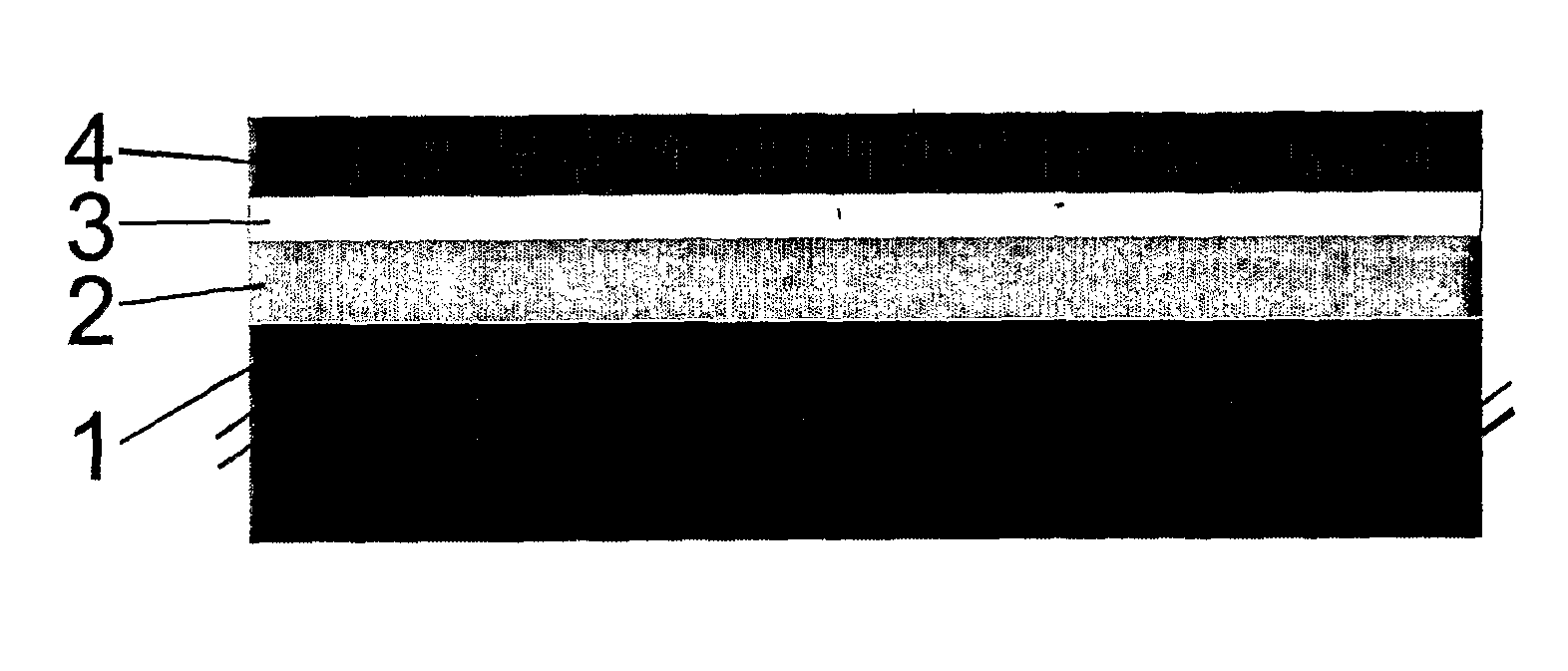Method for Producing a Reversible Solid Oxide Fuel Cell
a solid oxide fuel cell and oxidation method technology, applied in the direction of cell components, final product manufacturing, sustainable manufacturing/processing, etc., can solve the problems of oxidation of anodes, negative impact on the overall cell performance, and material use challenges
- Summary
- Abstract
- Description
- Claims
- Application Information
AI Technical Summary
Benefits of technology
Problems solved by technology
Method used
Image
Examples
example 1
Preparation of a Reversible SOFC with Porous Cathode Impregnation Layer
[0084]A metallic support layer was tape-cast from a powder suspension comprising a Fe22Cr alloy, followed by a drying step. The support layer had a thickness of 300 μm. Thereon, a porous layer comprising Zr0.78Sc0.20Y0.02O2-δ for later impregnation of the cathode was formed by spray painting. The layer had a thickness of 50 μm and a porosity of about 40% with an average pore size of about 1-3 μm. Then, an electrolyte layer comprising Zr0.78Sc0.20Y0.02O2-δ was formed thereon, also by spray painting. The electrolyte layer was formed from doped zirconia and had a thickness of about 10 μm. The obtained multi-layer structure was dried, followed by sintering under reducing conditions at about 1300° C.
[0085]After sintering a nitrate solution of (Gd0.1Ce0.9)O2-δ and (La0.6Sr0.4)0.98(Cu0.2Fe0.8)O3-δ was impregnated in to the cathode precursor layer by vacuum infiltration. The nitrates were subsequently decomposed at 500° ...
example 2
[0087]A metallic support layer was tape-cast from a powder suspension comprising a FeCrMn0.01 alloy, followed by a drying step. The support layer had a thickness of 400 μm.
[0088]After drying of the support layer, a layer for later electrode impregnation (layer 2, 50 micrometer) was deposited by screen-printing an ink comprising a 1:1 volume mixture of Zr0.78Sc0.20Y0.02Zr2-δ and a Fe24CrMn0.01 The layer had a thickness of 50 μm. Finally an electrolyte layer comprising Zr0.78Sc0.20Y0.02O2-δ was deposited by spray painting.
[0089]The multilayer structure was sintered and the cathode impregnated as described in Example 1.
[0090]After sintering a redox stable anode was deposited by spray painting a suspension of NiO—Zr0.78Sc0.20Y0.02Zr2-δ—TiO2. (52:43:5 weight %, respectively), followed by an additional sintering step at about 1000° C. in air. During sintering of the anode, NiTi2O4 was formed in the anode structure. The redox stable microstructure was created during the initial reduction o...
example 3
[0091]Same method as in Example 2, but with the composition for the redox stable anode comprising pre-reacted NiTiO3 before processing.
PUM
| Property | Measurement | Unit |
|---|---|---|
| temperatures | aaaaa | aaaaa |
| thickness | aaaaa | aaaaa |
| thickness | aaaaa | aaaaa |
Abstract
Description
Claims
Application Information
 Login to View More
Login to View More - R&D
- Intellectual Property
- Life Sciences
- Materials
- Tech Scout
- Unparalleled Data Quality
- Higher Quality Content
- 60% Fewer Hallucinations
Browse by: Latest US Patents, China's latest patents, Technical Efficacy Thesaurus, Application Domain, Technology Topic, Popular Technical Reports.
© 2025 PatSnap. All rights reserved.Legal|Privacy policy|Modern Slavery Act Transparency Statement|Sitemap|About US| Contact US: help@patsnap.com


